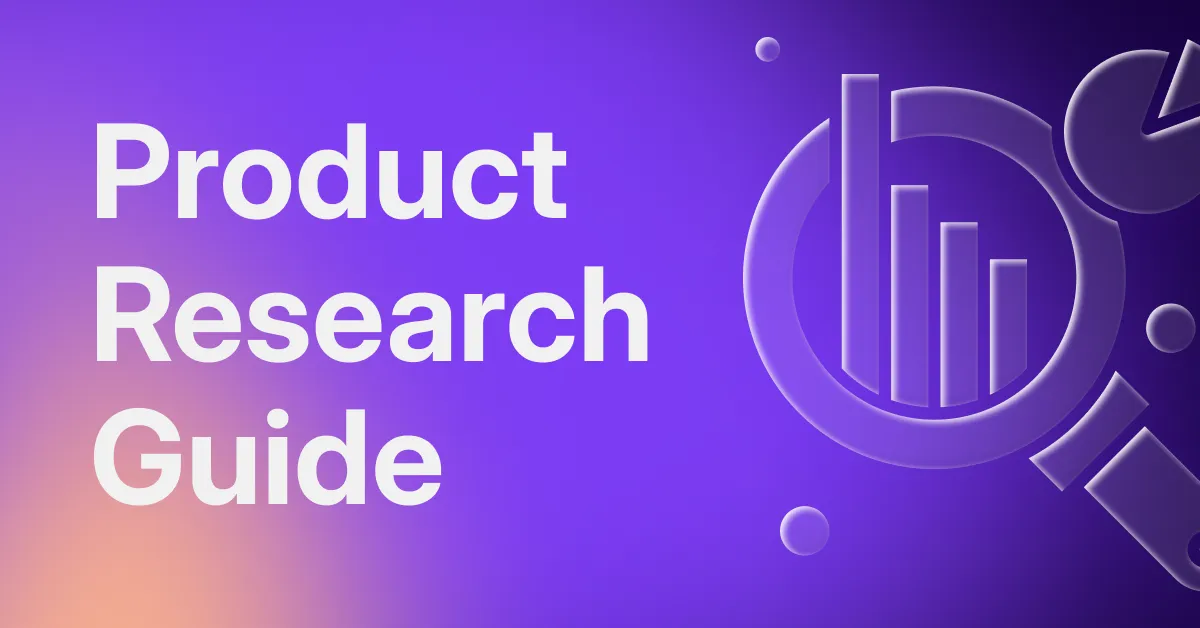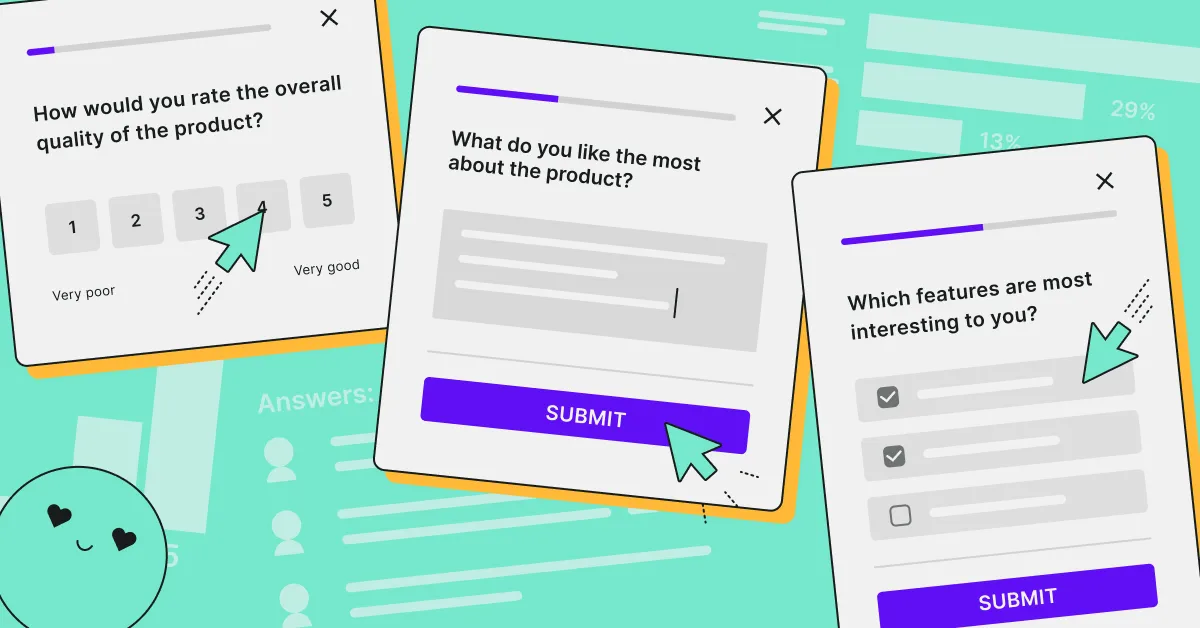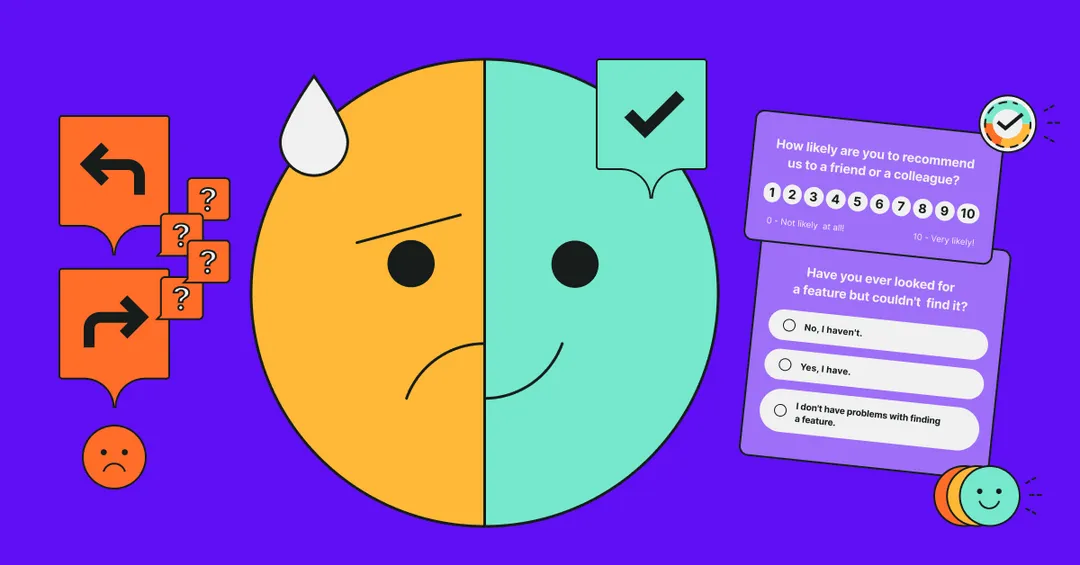The terms “user research” and “usability testing” are often used interchangeably, even though they mean different things.
While both provide value to the design process, it’s important to understand their differences and similarities.
In this blog post, we’ll show you the difference between usability testing and user research, and explain where the former fits in the latter.
What is user research?
User research, often referred to as UX (user experience) research, is an umbrella term that includes a set of qualitative and quantitative research methods that aim to understand the target users' needs, behaviors, experiences, and motivations.
The goal of user research is to place the user at the center of the design process. It aims to understand the users' contexts, how they interact with similar products or services, what they expect, and where their pain points might lie.
User research can involve a variety of methods, and they can be broadly categorized as:
- observational methods, including field studies, ethnographic studies, and contextual inquiries where researchers observe users in their natural environment,
- interviewing techniques, such as individual interviews, focus groups, and diary studies where users are asked about their behaviors, needs, motivations, and experiences,
- surveys, which allow for the collection of data from a broad range of users quickly and efficiently,
- testing methods, such as usability testing, A/B testing, and beta testing where users interact with the product or service, and their experience is evaluated.
As one of the most popular research methods, surveys can be used at any stage of the user journey to gauge different UX metrics, for instance, the Net Promoter Score:
The findings from user research can help answer questions such as:
- Who are our users?
- What are their goals and pain points?
- What motivates them?
- How do they perceive our brand or product?
User research is a fundamental part of the design process as it reduces guesswork and assumptions and ensures that the final product or service aligns with what users want and need.
What is usability testing?
Usability testing, on the other hand, is one of the methods applied in user research. It aims to uncover any usability issues in your product.
In a usability testing session, participants are asked to complete a series of tasks while observers, often including the designers, developers, and researchers, watch, listen, and take notes.
The tasks are usually related to specific use cases or features of the product, and they help to understand if the users are able to use the product as intended, how long it takes for them to complete the tasks, and how satisfied they are with their experience.
Usability testing can be conducted in various ways, including:
- moderated usability testing: an in-person or remote session where a moderator guides a participant through a series of tasks and prompts them to provide feedback;
- unmoderated usability testing: a remote testing method where users complete tasks at their own pace, often using software to record their interactions and feedback;
- guerrilla usability testing: an informal method where random people are asked to use the product and provide feedback, typically in a public place like a coffee shop;
- A/B testing: a method where two versions of the same webpage or feature are compared to see which one performs better;
- think aloud protocol: participants are asked to verbalize their thought process as they navigate through the product.

Why you should include usability testing in your user research
Usability testing plays an essential role in product research and development, offering numerous benefits to both your team and end users.
Identifying usability issues
Perhaps the most apparent benefit is that usability testing identifies any problems users may encounter while using a product. These insights are invaluable for enhancing the product's usability.
Improving user satisfaction
By ensuring a product is easy to use and meets the users' needs, usability testing directly contributes to enhancing user satisfaction and overall user experience.
You can measure user satisfaction with key aspects of your product by using this survey:
Reduce development costs
Catching usability issues early on can save time and resources in the long run. It's significantly more cost-effective to make changes during the development phase than after the product has been released.
Increasing productivity
For products designed to facilitate specific tasks, usability testing can help ensure the product is efficient and allows users to complete tasks quickly and effectively.
Enhancing market competitiveness
A product that is easy to use and well-received by users can stand out in the market. Usability testing can give companies a competitive edge.
Increasing user adoption and retention
Users are more likely to continue using a product that is easy to use and meets their needs. Usability testing can therefore improve user retention and loyalty.
In summary, usability testing is a crucial step in product development that brings significant benefits. It offers a user-centric approach to design and development, leading to products that not only meet business goals but also deliver a satisfying, engaging, and successful user experience.

Collect user insights effortlessly with Survicate
By integrating usability testing into your broader user research strategy, you can ensure that your design decisions are informed by an in-depth understanding of your users and their needs.
However, user research isn't a one-size-fits-all process. It requires the strategic use of various methods and tools to gather a holistic understanding of your users. This is where tools such as Survicate come in.
Surveys can play a significant role, allowing you to gather quantitative data from a broad user base quickly and efficiently.
But Survicate isn't just about gathering data; it's about understanding the story that the data tells. By combining the insights gained through Survicate surveys with the in-depth, qualitative data from usability testing, you can create a comprehensive picture of your users' experiences, driving design decisions that truly resonate with your user base.
To get started, simply sign up for free, pick a survey template, and enjoy the invaluable user insight, delivered straight to your inbox or any third-party tools you use.
You might also be interested in:













.webp)
.webp)
.svg)

.svg)



